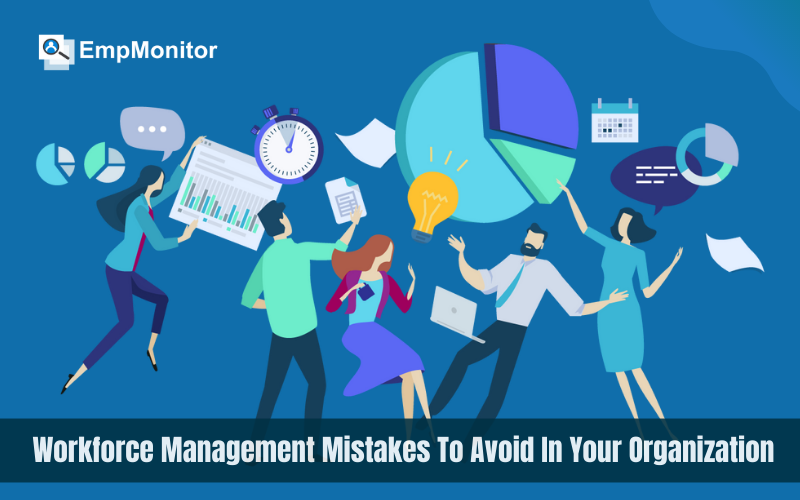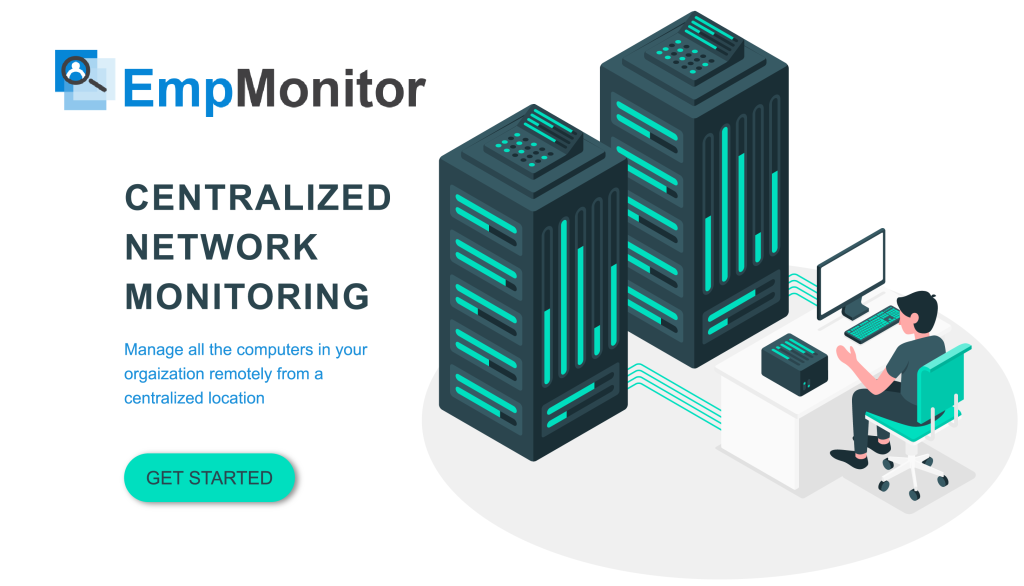Workforce management has become a challenging task for managers. It involves managing and balancing various aspects such as employee schedules, workload, performance, training, and development. And it requires managers to have a clear understanding of their organization’s workforce needs and the ability to make informed decisions based on data analysis.
With the advent of technology, workforce management applications have become a popular choice for organizations to streamline their workforce management system. However, despite the availability of such applications, many organizations still make common mistakes that hinder their ability to manage their workforce more efficiently.
Here in this blog, we are going to discuss such mistakes that may happen during the process of managing a workforce. And how you can use workforce management applications to minimize those workforce management mistakes.
Listen To Podcast In Human Voice-
So without further ado, here we go!
What Are The Top Workforce Management Mistakes To Avoid?
We all know that management is an essential aspect of running a successful business. But you may know that even some of the most experienced managers can make errors while handling multiple jobs. Such mistakes can negatively impact the productivity and overall performance of your organization. Therefore, it is essential to identify and avoid these common workforce management mistakes.
Thanks to technology, managers can use workforce management applications that make it easier to supervise the workforce without putting on much effort. Still, managers must be careful about some common mistakes such as micromanagement, poor communication, and not investing in the right workforce management applications.
Here are the 7 most common mistakes that top management must avoid:
Micromanaging & Poor Delegation –
Micromanagement and poor delegation are common workforce management mistakes that can negatively impact an organization’s productivity and employee morale. Micromanagement is a management style where the manager closely oversees and controls every aspect of their team’s work, which can lead to reduced autonomy, creativity, and motivation among team members. Following such a workforce management style can also lead to burnout, as team members may feel overwhelmed or undervalued.
On the other hand, poor delegation occurs when a manager fails to delegate tasks appropriately to their team members. It may lead to inefficiencies, as team members may not have the necessary skills or resources to complete tasks effectively. Poor delegation can also lead to missed deadlines, poor-quality work, and frustration among team members who feel undervalued or underutilized.
Poor Communication-
Having effective communication is an essential aspect of workforce management. Poor communication between managers and employees can lead to misunderstandings, decreased productivity, and low morale. Inadequate communication can result in missed deadlines, duplicated efforts, and increased conflict among team members.
Fortunately, there are workforce management applications that managers can use to streamline the communication process within the organization. These applications can facilitate communication between team members, providing a platform for real-time messaging, file sharing, and project management. Managers can use workforce management software to delegate tasks, track progress, and provide feedback, improving team collaboration and productivity.
Not Having Clear Goals & Expectations-
Being a manager, if you are in a delusion about the capabilities of your employees, you may assign them tasks beyond their capacity. Or may even fail to recognize their strengths and weaknesses, leading to frustration, decreased morale, and low productivity.
In that case, having workforce management in an organization could be a great help. Utilizing workforce management applications, managers can break down large goals into smaller, more manageable tasks and assign them to individual team members. And thereby ensuring that every employee understands their roles and responsibilities towards the company.
These tools also have reporting and monitoring features that allow management to track employees’ work performances. That makes it easier for managers to gauge the capabilities of employees. And accordingly, they can even encourage or recognize employees who are best at their work. This approach can help employees feel more invested in their work by making them more satisfied and improving retention rates.
Relying On Manual Workforce Management –
Of course, if managers handle workforce management responsibilities manually, it would take too much of their efforts and time. Manual workforce management is a time-consuming process. And it surely is prone to errors and inefficiencies, leading to decreased productivity, increased costs, and lower employee satisfaction.
Fortunately, nowadays, companies are equipped with workforce management tools that automatically handle work time tracking, attendance monitoring, and productivity measuring features much more efficiently. Whether you are looking for workforce management software for small business or enterprise, EmpMonitor is one of the best options that you can have.
Many organizations have utilized EmpMonitor to overcome manual workforce management problems. EmpMonitor is an advanced workforce management software that offers many efficient features to help businesses overcome manual workforce management problems. Some of its most efficient features include time tracking, activity monitoring, productivity analysis, and team management tools.
With EmpMonitor, businesses can accurately track employee work hours, monitor their activities in real-time, and generate comprehensive productivity reports. The software also offers advanced team management features such as task delegation, project management, and collaboration tools, enabling businesses to manage their workforce more effectively.
EmpMonitor’s user-friendly interface and customizable dashboard make it easy for businesses to track their workforce, analyze data, and make informed decisions. It is an excellent choice for businesses of all sizes, from small startups to large enterprises, looking to improve their workforce management processes and boost productivity.
Also Read-
How To Manage Time Off Requests For Payday + Template Format
How To Determine Which Workforce Management Software Is Best For Your Business?
Not Analyzing Previous Workforce Data-
Workforce management applications can help businesses analyze previous workforce data. And accordingly, it can also generate reports that highlight trends, patterns, and areas for improvement. This data can include information on employee attendance, time off requests, task completion times, and other key metrics that can provide insights into workforce performance and productivity.
Analyzing the previous workforce data would help the organizations to identify the areas where they need to improve. Based on past experience, they can work on increasing employee efficiency, reducing costs, and enhancing employee satisfaction in the workplace.
For example, analyzing attendance data may reveal patterns of absenteeism, leading to targeted interventions to improve employee engagement and reduce absenteeism.
In addition, workforce management applications can also provide you with real-time data and insights about your employees. And accordingly, you can make informed decisions about workforce scheduling, staffing, and resource allocation. And optimize business operations, improve productivity, and achieve your business goals.
Also Read-
5 Reasons Why Your Business Needs Workforce Scheduling Software
Inadequate Employee Training-
Without proper training, employees may not have the skills, knowledge, or confidence to perform their work effectively, leading to mistakes, low morale, and reduced productivity. Workforce management applications can help businesses develop and implement effective training programs for their employees.
Some tools can even provide you with options to allocate tasks and track employee progress. This would help you know how efficient an employee is in their job. And whether they would be able to finish their work within the deadline or not.
EmpMonitor has a similar feature where the employer can allocate projects and tasks to employees and check their performances. While it also shows the tasks’ progress, their ongoing status, and the time they took to complete a project. Based on the analysis, you may keep track of the capabilities of your employees. And accordingly, assign them relevant tasks in which they can do their best.
Lack Of Development Opportunities-
Employees who feel stagnant in their positions and have no opportunities for growth may become disengaged and seek opportunities elsewhere. Due to remote working opportunities, employees have many more options to look for companies where they can improve their skills and knowledge. In such a case, if you don’t give enough growth opportunities to your employees, it may result in disengaged employees and higher turnover rates.
Workforce management applications can help you to identify opportunities for employee development and track employee progress toward their career goals. Having such applications can help you to analyze the work behavior of employees. It would also help you know about the tools they need and the skills they want to develop. Based on that, you can provide employees with tools that would enrich their skills and knowledge.
Using workforce management software like EmpMonitor, managers could learn about the tools and applications used by their veteran employees. Knowing that you can encourage newer recruits to learn those skills and enhance their knowledge.
Also, if you find your employees eager to learn new skills and improve performance, you should motivate them to do so. That would result in your employees getting more satisfied with their job. And it would also reflect in lowering your employees’ turnover rates.
Conclusion
In today’s dynamic business environment, effective workforce management is critical for organizational success. Here in this blog, we have mentioned several common workforce management mistakes that organizations must avoid to ensure they are achieving their goals and objectives.
By leveraging workforce management applications and software, organizations can overcome these mistakes and improve their employee management practices. You can use such applications to streamline your workforce management processes, increase productivity, and improve employee engagement and satisfaction.
Moreover, you can also use such apps to identify areas for improvement and track employee performance. And take informed decisions to enhance workforce management practices. By avoiding these common mistakes and utilizing workforce management applications, you can surely optimize your workforce, reduce costs, and drive growth and success.



















